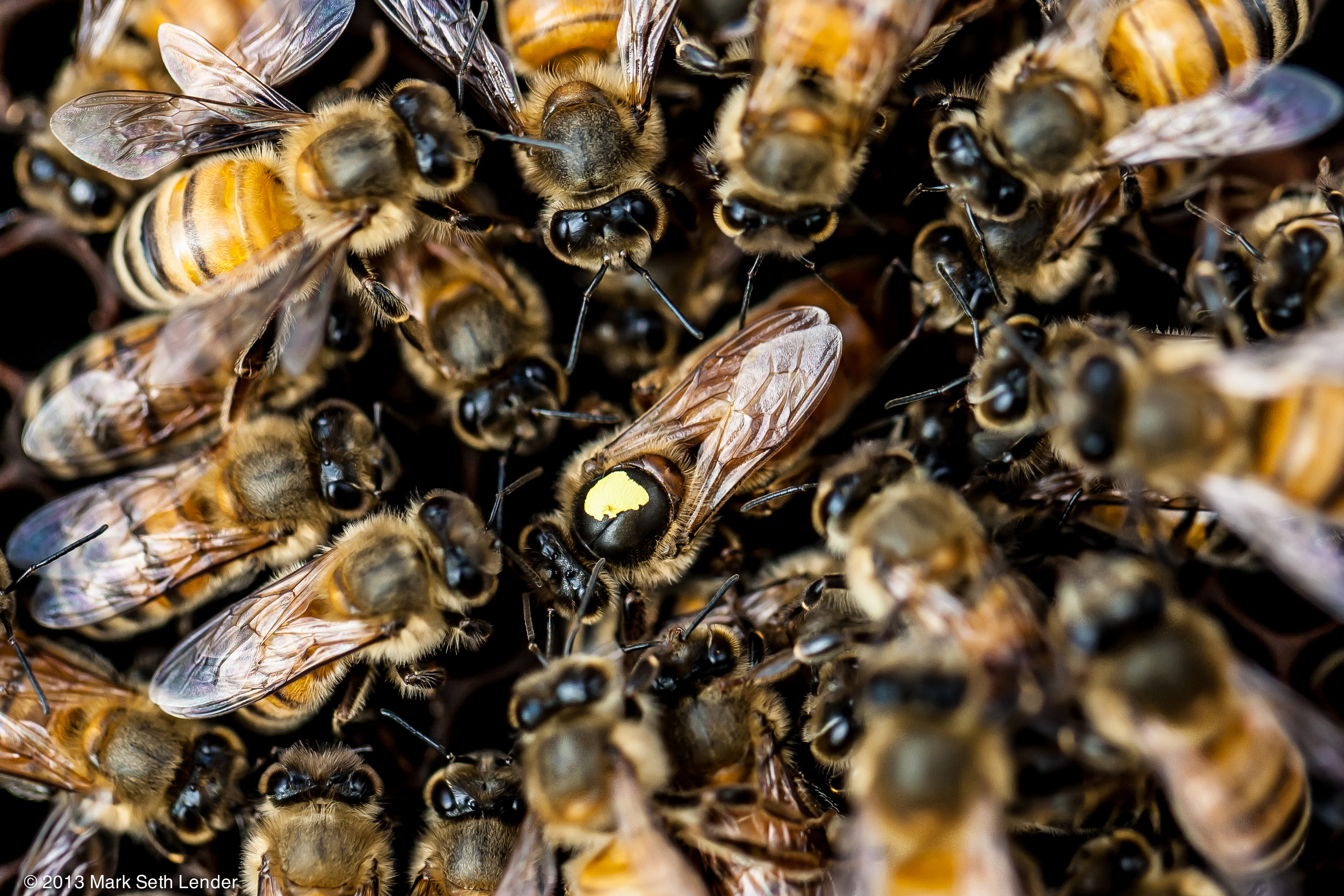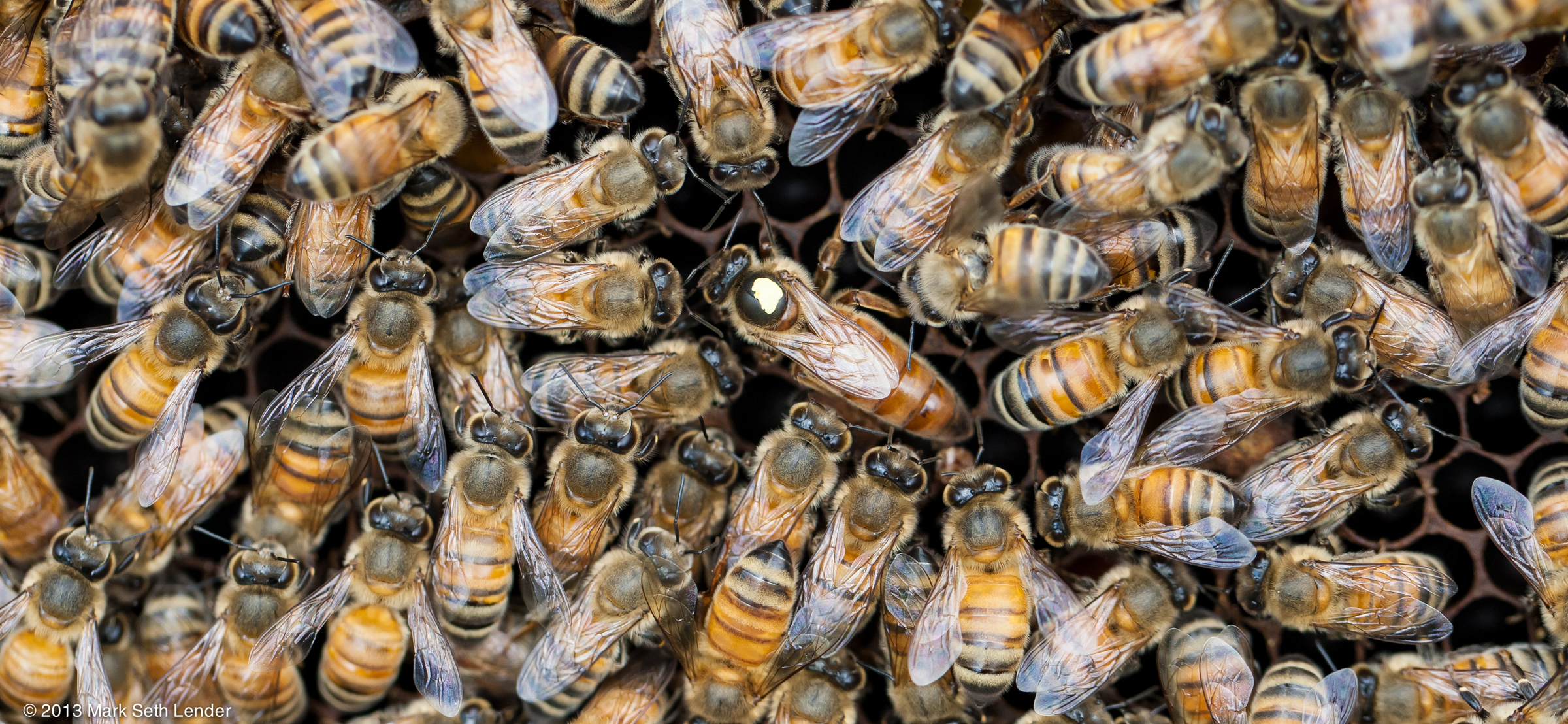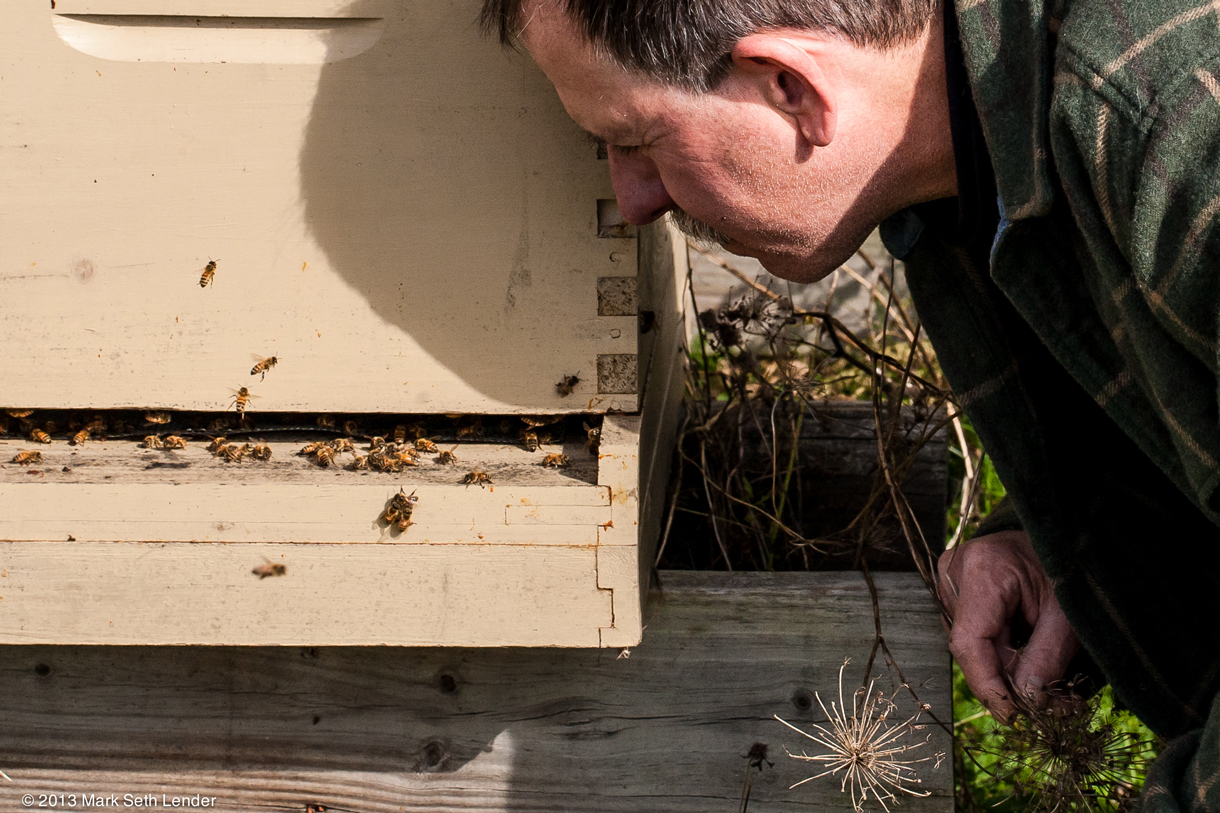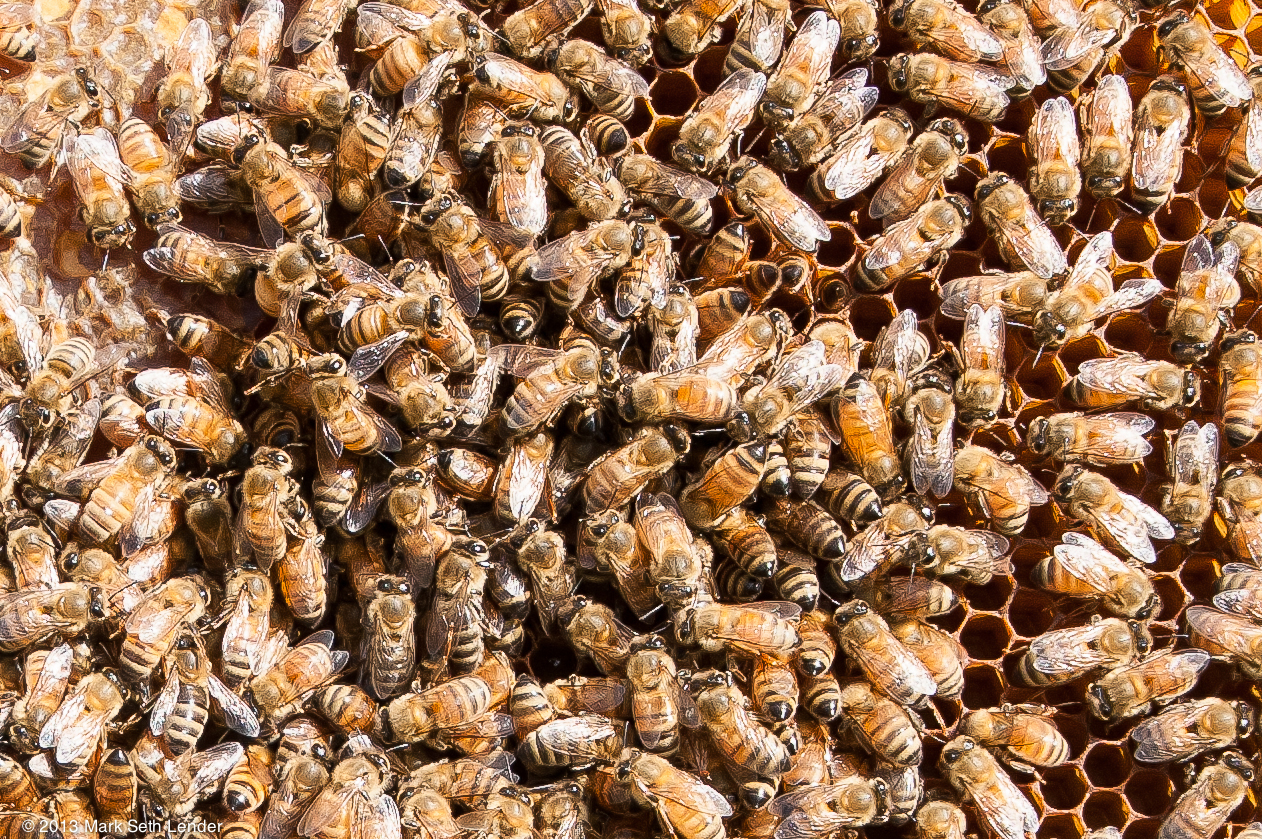Jim's Bees
Air Date: Week of November 1, 2013

Workers with queen bee (photo: Mark Seth Lender)
Though we're putting the clocks back and it's growing colder and darker, writer Mark Seth Lender recalls the warmth, sweetness and menace of a recent visit to a bee-keeper.
Transcript
CURWOOD: When it comes to be time to change the time, and push the hands of the clock back, it's a harbinger of longer nights, and for those of us in northern hemisphere, of the wintry weather to come. But even as the days grow short and cold, writer Mark Seth Lender recalls a memory of summer warmth and risky sweetness.
LENDER: Jim Clinton is a large man, raw hands, sunburned brow, and he walks with the gait of gantry crane as he lumbers across that field over there. White boxes line the furrowed rows. They hold his heart: And the beat of ten thousand wings unfolds.

Workers with a queen bee (photo: Mark Seth Lender)
“Bend low,” he says, “you can smell a healthy hive.”

Mark Seth Lender inhales the scent of a healthy hive (photo: Mark Seth Lender)
I lean down, inches from the open combs, close my eyes and inhale through my nose. The smell is soft, spiced, mildly sweet; but the thing that compels is that idling purr that can turn on a dime to an angry roar - the sound of the sound of a hard demise.

Workers with queen bee (photo: Mark Seth Lender)
The venom of bees breaks down the cells. The heart will race. The pressure falls. Blood thins beyond tolerance; breathing quickens, then drops to a trough. You will try to run, the mind confused you run the wrong way. And panicked stumble in your pain. Eyelids. Wrists. Fingers, both hands. The cheeks, oh yes and into the hair and beneath the clothes and if you scream? The tongue. Like a cobra’s hood they rise, a black strike in the warm of summer air… You lie on the ground, and die, right there.
All this they can, yet they do not. They are calm. An enormous orchestra tuning its strings, and a chatter like shaken seeds in an empty gourd as the gatherers tell of the pollen they’ve found. Where it lies. How far. While the workers come and go and antennae touch like fingertips and the small red tongues dart and kiss.
But now Jim Clinton opens the lid of another hive, “they’re angry” he says. “You better stand clear.”
And I do, but not near fast enough.
Thap!
Bee hits the side of my head the blow as hard as a finger snap then another and again now the nape of my neck and I know what they mean:
ARE YOU DEAF? MOVE BACK! MOVE BACK!
-2.jpg)
Jim Clinton smoking angry bees (photo: Mark Seth Lender)
So I do.
They pursue – 40 yards, no further - and mad as they are, not one stings…
It’s winter now. The bees are few, and small. The hum is gone. And the hive makes its sleeping sound: dry leaves scattered on hardened ground.
CURWOOD: Mark Seth Lender is the author of Salt Marsh Dairy: A Year on the Connecticut coast. For some photos of the beehives, buzz on over to our website, LOE.org.
Living on Earth wants to hear from you!
Living on Earth
62 Calef Highway, Suite 212
Lee, NH 03861
Telephone: 617-287-4121
E-mail: comments@loe.org
Newsletter [Click here]
Donate to Living on Earth!
Living on Earth is an independent media program and relies entirely on contributions from listeners and institutions supporting public service. Please donate now to preserve an independent environmental voice.
NewsletterLiving on Earth offers a weekly delivery of the show's rundown to your mailbox. Sign up for our newsletter today!
 Sailors For The Sea: Be the change you want to sea.
Sailors For The Sea: Be the change you want to sea.
 The Grantham Foundation for the Protection of the Environment: Committed to protecting and improving the health of the global environment.
The Grantham Foundation for the Protection of the Environment: Committed to protecting and improving the health of the global environment.
 Contribute to Living on Earth and receive, as our gift to you, an archival print of one of Mark Seth Lender's extraordinary wildlife photographs. Follow the link to see Mark's current collection of photographs.
Contribute to Living on Earth and receive, as our gift to you, an archival print of one of Mark Seth Lender's extraordinary wildlife photographs. Follow the link to see Mark's current collection of photographs.
 Buy a signed copy of Mark Seth Lender's book Smeagull the Seagull & support Living on Earth
Buy a signed copy of Mark Seth Lender's book Smeagull the Seagull & support Living on Earth

